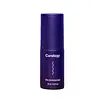What's inside
What's inside
 Key Ingredients
Key Ingredients

 Benefits
Benefits

 Concerns
Concerns

No concerns
 Ingredients Side-by-side
Ingredients Side-by-side

Water
Skin ConditioningDimethicone
EmollientGlycerin
HumectantPropanediol
SolventPolysilicone-11
Cetearyl Olivate
Butylene Glycol
Humectant1,2-Hexanediol
Skin ConditioningSodium Acrylate/Sodium Acryloyldimethyl Taurate Copolymer
Emulsion StabilisingSorbitan Olivate
EmulsifyingPolyisobutene
Carbomer
Emulsion StabilisingAminomethyl Propanol
BufferingCitric Acid
BufferingCaprylhydroxamic Acid
Disodium EDTA
Sodium Hyaluronate
HumectantDimethiconol
EmollientCaprylyl/Capryl Glucoside
CleansingDecyl Glucoside
CleansingWater, Dimethicone, Glycerin, Propanediol, Polysilicone-11, Cetearyl Olivate, Butylene Glycol, 1,2-Hexanediol, Sodium Acrylate/Sodium Acryloyldimethyl Taurate Copolymer, Sorbitan Olivate, Polyisobutene, Carbomer, Aminomethyl Propanol, Citric Acid, Caprylhydroxamic Acid, Disodium EDTA, Sodium Hyaluronate, Dimethiconol, Caprylyl/Capryl Glucoside, Decyl Glucoside
Water
Skin ConditioningGlycerin
HumectantDimethicone
EmollientPropanediol
SolventSaccharide Isomerate
HumectantGlyceryl Caprylate
EmollientPolysilicone-11
Butyrospermum Parkii Butter
Skin ConditioningHydroxyethyl Acrylate/Sodium Acryloyldimethyl Taurate Copolymer
Emulsion StabilisingPolymethylsilsesquioxane/Silica Crosspolymer
Carbomer
Emulsion StabilisingPolyisobutene
Caprylhydroxamic Acid
Glyceryl Acrylate/Acrylic Acid Copolymer
HumectantPEG-7 Trimethylolpropane Coconut Ether
EmulsifyingSodium Hydroxide
BufferingPhenoxyethanol
PreservativeZingiber Officinale Root Extract
MaskingSalvia Officinalis Leaf Extract
CleansingCamellia Sinensis Leaf Extract
AntimicrobialAloe Barbadensis Leaf Extract
EmollientTrisodium Ethylenediamine Disuccinate
Decyl Glucoside
CleansingWater, Glycerin, Dimethicone, Propanediol, Saccharide Isomerate, Glyceryl Caprylate, Polysilicone-11, Butyrospermum Parkii Butter, Hydroxyethyl Acrylate/Sodium Acryloyldimethyl Taurate Copolymer, Polymethylsilsesquioxane/Silica Crosspolymer, Carbomer, Polyisobutene, Caprylhydroxamic Acid, Glyceryl Acrylate/Acrylic Acid Copolymer, PEG-7 Trimethylolpropane Coconut Ether, Sodium Hydroxide, Phenoxyethanol, Zingiber Officinale Root Extract, Salvia Officinalis Leaf Extract, Camellia Sinensis Leaf Extract, Aloe Barbadensis Leaf Extract, Trisodium Ethylenediamine Disuccinate, Decyl Glucoside
Ingredients Explained
These ingredients are found in both products.
Ingredients higher up in an ingredient list are typically present in a larger amount.
Caprylhydroxamic Acid is a chelating agent.
Chelating agents help prevent metal ions from binding to other ingredients. This helps prevent unwanted reactions and effects from using the product.
Caprylhydroxamic Acid is often used with natural antimicrobial products as an alternative to preservatives.
Learn more about Caprylhydroxamic AcidCarbomer is a polymer of acrylic acid. Its main role is to create a gel consistency.
A high amount of carbomer can cause pilling or balling up of products. Don't worry, most products contain 1% or less of carbomer.
Decyl Glucoside is a glucose-based surfactant and emulsion stabilizer. It is created by reacting glucose with the fatty acids from plants.
Surfactants help clean the skin by trapping oil, sebum, and dirt to be washed away. As an emulsion stabilizer, it stabilizes the ingredients in a product by preventing them from separating.
This ingredient is biodegradable and non-toxic. This ingredient is commonly found in baby shampoos.
Decyl Glucoside is sometimes used to stabilize the UV filter Tinosorb.
Learn more about Decyl GlucosideDimethicone is a type of synthetic silicone created from natural materials such as quartz.
What it does:
Dimethicone comes in different viscosities:
Depending on the viscosity, dimethicone has different properties.
Ingredients lists don't always show which type is used, so we recommend reaching out to the brand if you have questions about the viscosity.
This ingredient is unlikely to cause irritation because it does not get absorbed into skin. However, people with silicone allergies should be careful about using this ingredient.
Note: Dimethicone may contribute to pilling. This is because it is not oil or water soluble, so pilling may occur when layered with products. When mixed with heavy oils in a formula, the outcome is also quite greasy.
Learn more about DimethiconeGlycerin is already naturally found in your skin. It helps moisturize and protect your skin.
A study from 2016 found glycerin to be more effective as a humectant than AHAs and hyaluronic acid.
As a humectant, it helps the skin stay hydrated by pulling moisture to your skin. The low molecular weight of glycerin allows it to pull moisture into the deeper layers of your skin.
Hydrated skin improves your skin barrier; Your skin barrier helps protect against irritants and bacteria.
Glycerin has also been found to have antimicrobial and antiviral properties. Due to these properties, glycerin is often used in wound and burn treatments.
In cosmetics, glycerin is usually derived from plants such as soybean or palm. However, it can also be sourced from animals, such as tallow or animal fat.
This ingredient is organic, colorless, odorless, and non-toxic.
Glycerin is the name for this ingredient in American English. British English uses Glycerol/Glycerine.
Learn more about GlycerinPolyisobutene is a synthetic polymer made from isobutene.
It is a film-forming agent and helps bind ingredients together.
Polyisobutene is not absorbed by the skin.
Learn more about PolyisobutenePolysilicone-11 is a film-forming silicone that creates a non-tacky and matte finish on the skin. It's commonly used to improve texture, absorb excess oil, and help active ingredients spread evenly.
Due to its "rubber-like" structure, it stays on the skin's surface instead of being absorbed. On the skin, it creates a flexible layer that enhances wearability and stability.
Propanediol is an all-star ingredient. It softens, hydrates, and smooths the skin.
It’s often used to:
Propanediol is not likely to cause sensitivity and considered safe to use. It is derived from corn or petroleum with a clear color and no scent.
Learn more about PropanediolWater. It's the most common cosmetic ingredient of all. You'll usually see it at the top of ingredient lists, meaning that it makes up the largest part of the product.
So why is it so popular? Water most often acts as a solvent - this means that it helps dissolve other ingredients into the formulation.
You'll also recognize water as that liquid we all need to stay alive. If you see this, drink a glass of water. Stay hydrated!
Learn more about Water